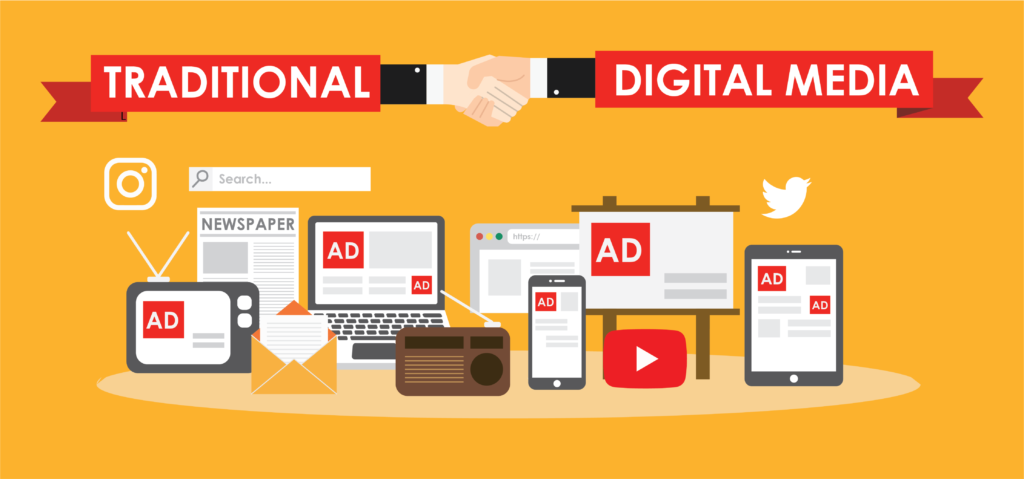Imagine a world where newspapers, radios, and television broadcasts are rendered obsolete. All we need to do is to click multiple buttons on our mobile phones to obtain the latest news bites, advertisements and updates. Governments can easily reach out to its people via digital media. Such is the trend of a world that is becoming increasingly interconnected.
This leads to the question: Can digital media replace traditional media?
Both traditional and digital forms of media play vastly different roles, and both have their own set of advantages and disadvantages.
To begin with, traditional media is media that existed before the rise of the internet, which includes newspapers, magazines, billboards, radio, and broadcast TV and direct mail.
Digital media includes online advertising, search engines, social media, video streaming services, and websites.
While traditional media is often able to reach out to a broader audience, digital media prides itself in being more interactive. In various social media platforms, internet users frequently leave comments under posts, where they can express their own opinion as well. Digital media hence promotes a two-way communication rather than solely disseminating information, such as in traditional media.
Furthermore, due to the nature of the internet, digital media provides more flexibility and allows posts to be altered or updated anytime, unlike the print media which has to go through a cumbersome process to do so.
However, traits such as interactiveness and flexibility are double-edged swords. Even though it may bring convenience and ease of use, it can also lead to the proliferation of inaccurate information, in other words, fake news. Any user is able to upload posts and share information which may not be verified, thereby reducing the accuracy of the information in the digital media realm.
Additionally, despite the disadvantages of traditional media mentioned above, it will not be replaced completely through digitalisation as traditional news outlets are constantly adapting and finding new ways to remain competitive. Several news or advertising companies are seeking to make use of online platforms to publicise their prior efforts, and some are even moving some of their bite-sized information on social media, so as to entice their readers to find out more through the traditional forms of media.
In conclusion, traditional media and digital media are not mutually exclusive, and they are able to leverage each other’s strengths to survive. Both forms ought to work hand-in-hand to provide more choices and convenience for its readers. Through this, media consumers can truly benefit and get the best of both worlds.
